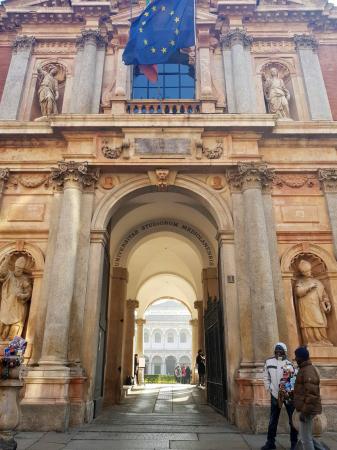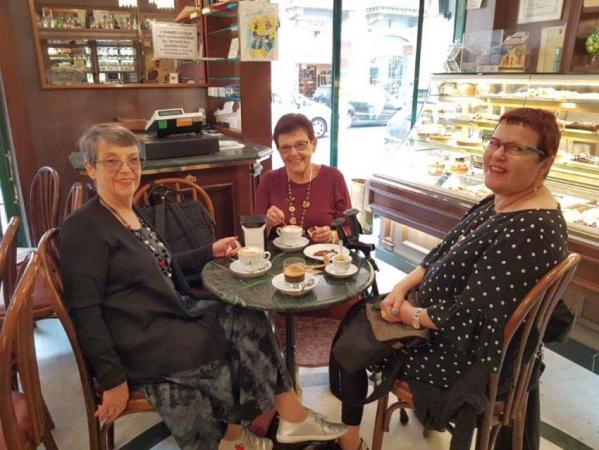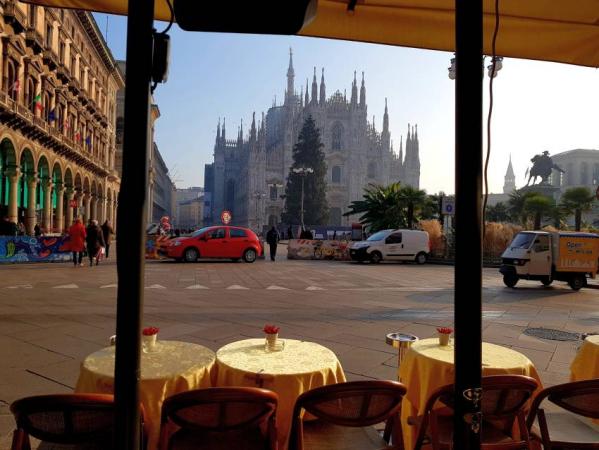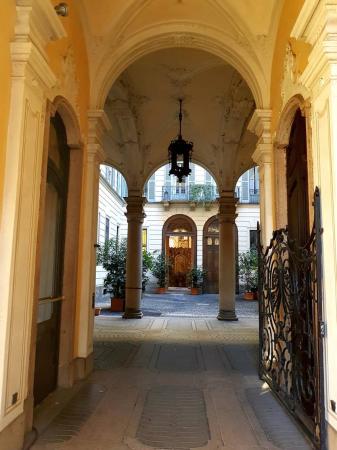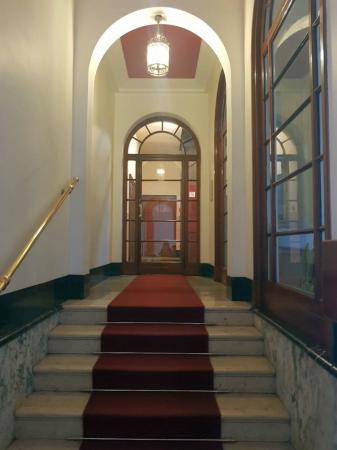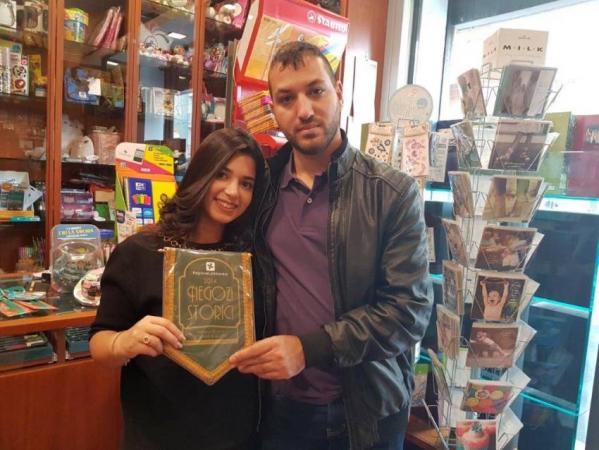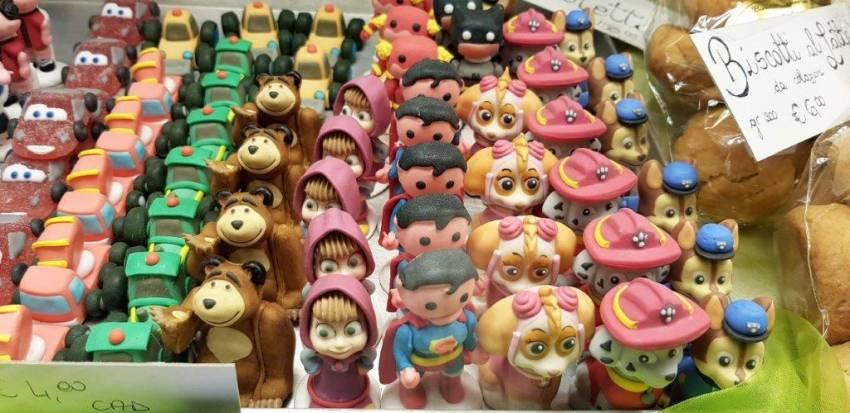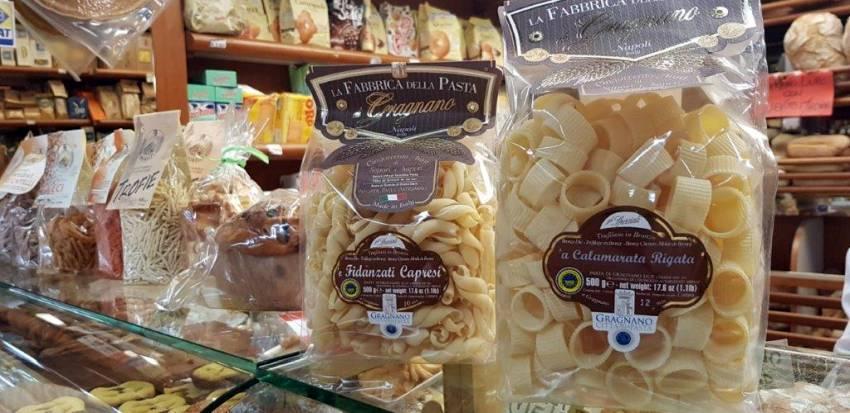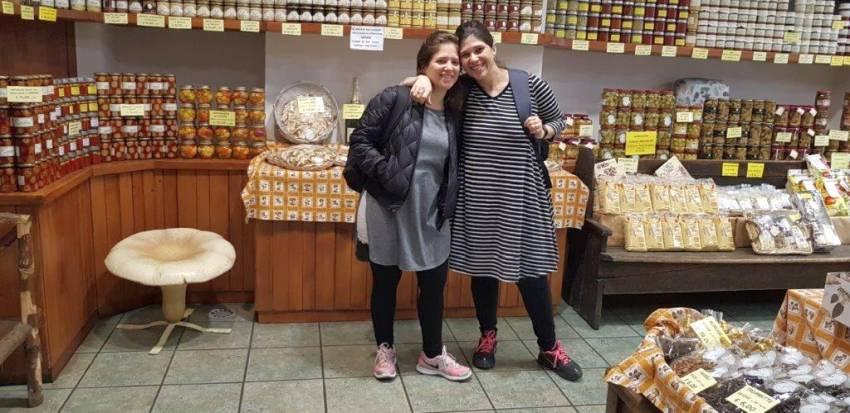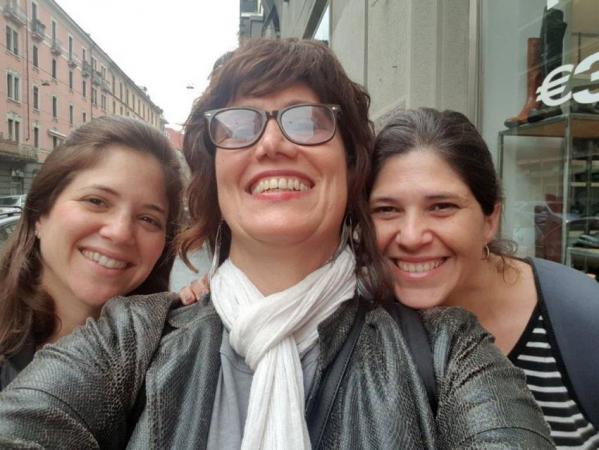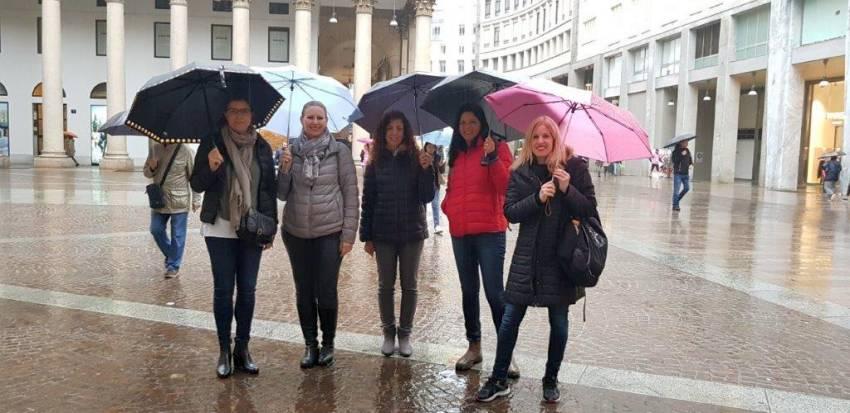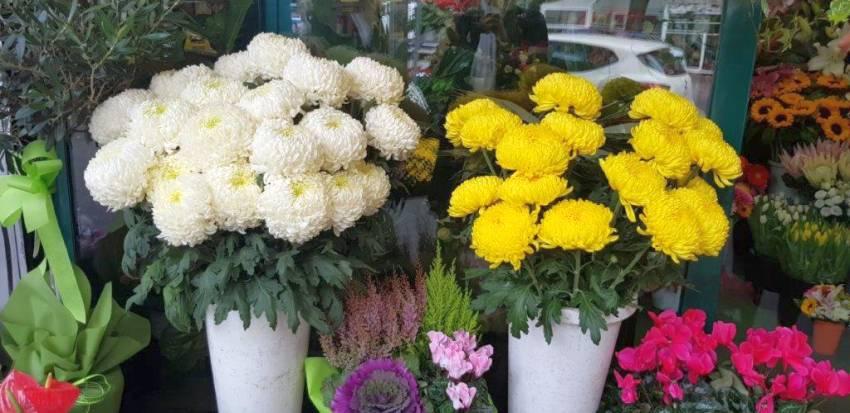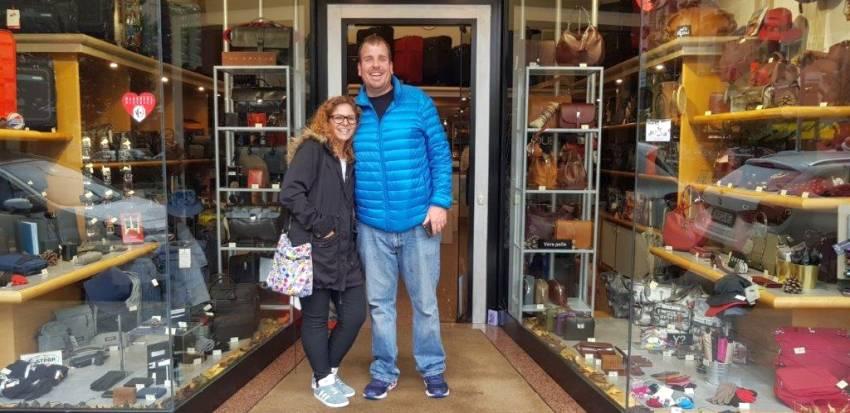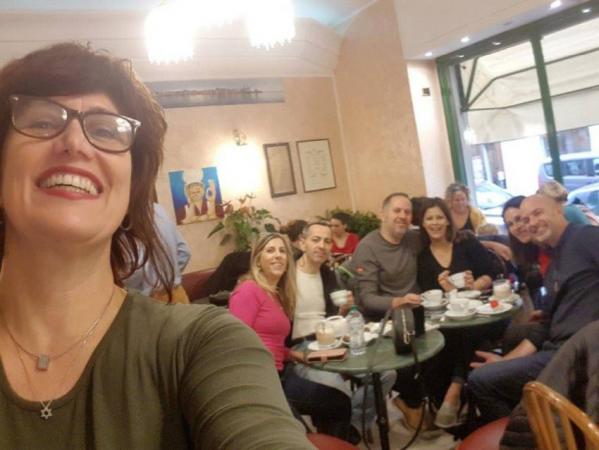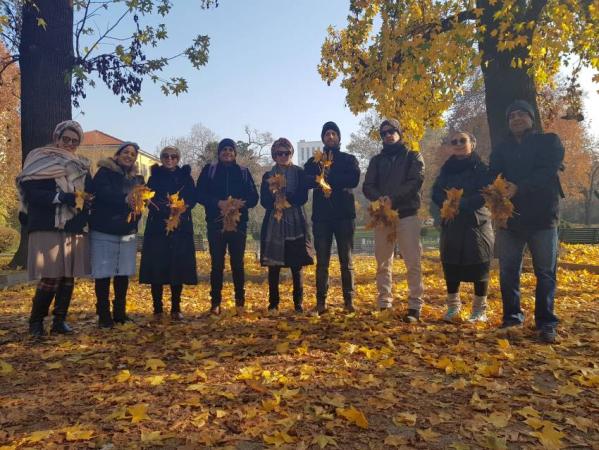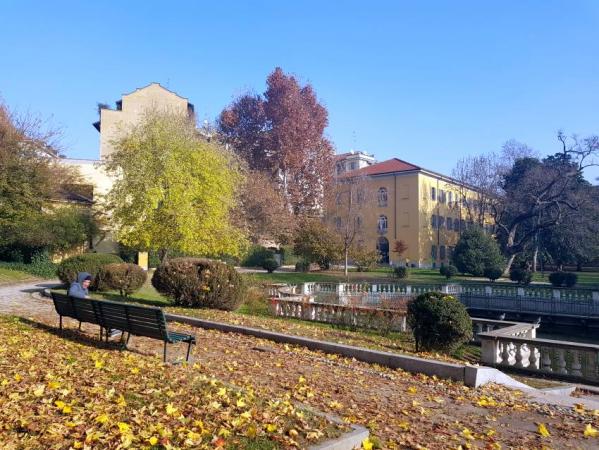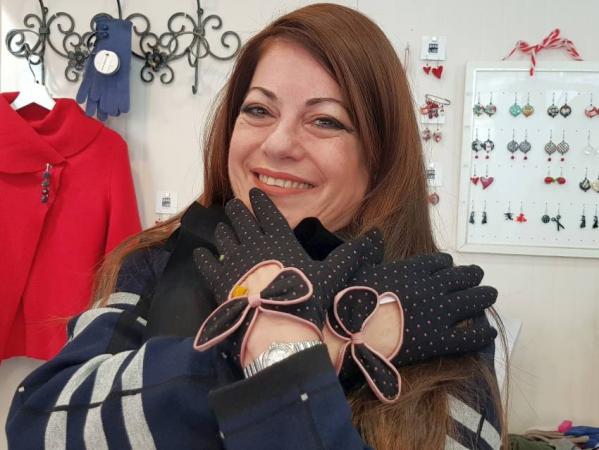About The Tour:
An intimate atmosphere tour that will give you an authentic Milanese experience. If you're interested in visiting the popular touristic attractions we can combine those too, but more than anything - I aim to lead you, with lots of humor and fun, to the beautiful hidden spots of the city that only locals know of.
We'll explore the beautiful architecture and magical local shops, and enjoy a luxurious culinary experience of coffee, Italian ice cream and more. The tour can be personalized to meet your taste and preferences, and since I'm familiar with the Jewish culture I can specifically accommodate to the Jewish traveler's needs.
Lastly, as a professional photographer, I offer beautiful photo sessions in the city (with photos of you given as a souvenir) upon request. Tours are available in Hebrew and in English, small group setting, max 8 people.
We'll explore the beautiful architecture and magical local shops, and enjoy a luxurious culinary experience of coffee, Italian ice cream and more. The tour can be personalized to meet your taste and preferences, and since I'm familiar with the Jewish culture I can specifically accommodate to the Jewish traveler's needs.
Lastly, as a professional photographer, I offer beautiful photo sessions in the city (with photos of you given as a souvenir) upon request. Tours are available in Hebrew and in English, small group setting, max 8 people.
Please contact me to set your expectations and personalize your experience.
About The City:
Milano is a city in northern Italy, capital of Lombardy, and the second-most populous city in Italy after Rome, It is the biggest industrial city of Italy with many different industrial sectors: art, commerce, design, education, entertainment, fashion, finance, healthcare, media, services, research and tourism.
Its business district hosts Italy's stock exchange and the headquarters of national and international banks and companies.
Its business district hosts Italy's stock exchange and the headquarters of national and international banks and companies.
The city has been recognized as the world's fashion and design capital thanks to several international events and fairs, including Milan Fashion Week and the Milan Furniture Fair.
Milan has an ancient city centre with high and interesting buildings and palazzos, which is why so many people from all over the world want to see the city of glamour.
Jewish Life Today in Milan:
The Jewish presence in Milan area burgeoned in the past 150 years when Jews from Persia, Libya, Morocco and Egypt emigrated north in search of religious freedom.
Today, the Jewish Community is second largest community in Italy, after Rome.
A community that looks forward. Let's find out about the paths, the places, the Synagogues, the Restaurant, the Kosher stores from the Shoah Memorial to the Temple in via Guastalla, from Cimitero Monumentale, to the CDEC Foundation, from Casa 770 to the best hamburger in Town, Kosher of course.
There are some Kosher Restaurants in Milano:
- A restaurant offering gourmet street food hamburgers
- An Ethnic-kosher restaurant/pizzeria
- A new restaurant serving the best Jewish- Roman and Middle Eastern cuisine.
- There is another kosher place offering a range of savoury options such as toasted sandwiches, salads and omelettes.
HISTORY
Milan’s origin goes back to 400 B.C., when Gauls settled and defeated the Etruscans.
In 222 B.C. the city was conquered by Romans and was annexed to the Roman Empire. After 313 A.D., the year of the Edict of Tolerance towards Christianity, many churches were built and the first bishop was appointed: Ambrogio was such an influential person that the church became the Ambrosian Church (7 December is a holiday to honour Sant’Ambrogio). In 1300 the Visconti family which are noblemen from Bergamo, Cremona, Piacenza, Brescia and Parma ruled and brought a period of glory and wealth to the city. The Duomo was built in 1386 and became the symbol of Milan.
ART AND CULTURE
The most important church is the Duomo di Milano, commissioned by Gian Galeazzo Visconti, the Cathedral started being built in 1386. It is the third largest church in the world after St. Peter’s in Rome and after the Cathedral of Seville. It is overall made of marble, with immense statues, arches, pillars, pinnacles. The statues are about 3500, including the 96 gargoyles. The highest pinnacle is at the height of 108.5 metres, and it has on its top the statue of the Virgin Mary, best known as the “Madonnina”, covered of gold. Inside the church there are many interesting works of art: the tomb of Gian Giacomo Medici di Marignano, known as “Il Medeghino”; the crypt and St. Carlo Borromeo’s statue; the wooden choir-stails; the Tivulziano candelabrum; the Egyptian porphyry basin. There also old stained-glass windows of the XV century.
Visiting the Cathedral, it is possible to go on the roof where you have a overview of the city. It is also possible to visit the ruins of the Baptistery of San Giovanni alle Fonti (Baptistery of Sant’Ambrogio).
Santa Maria delle Grazie was built between 1466 and 1490 and modified by Bramante. In the Refectory there is one of the most famous paintings of Leonardo da Vinci: the “Last Supper”."L'Ultima cena".
Other important Churches: Basilica di San Lorenzo Maggiore - San Maurizio al Monastero Maggiore - La Basilica di Sant'Ambrogio - Basilica di Sant'Eustorgio
Milan has many historic palazzos like the Palazzo Reale (Royal Palace) which is situated in the south side of Piazza Duomo. The Royal Palace is one of the most beautiful architectures of the Milanese 18th century. It was the home of the Visconti and of the Sforza families in the past and later, residence of the Spanish and of the Austrian governors. It was the architect Giuseppe Piermarini (the same who designed La Scala theatre) who renovate the building between 1771 and 1778 giving it the splendid Neoclassical appearance it has today.
From 1598 the Royal Palace housed the first permanent theatre in Milan, then destroyed by fire in 1776. In 1965 the city of Milan purchased the palace to use it as offices, museums and for the temporary shows and exhibitions.
From 1598 the Royal Palace housed the first permanent theatre in Milan, then destroyed by fire in 1776. In 1965 the city of Milan purchased the palace to use it as offices, museums and for the temporary shows and exhibitions.
Other important palazzos: Palazzo Isimbardi - Palazzo del Senato - Palazzo Dugnani - Palazzo di Brera - Palazzo del Governo - Palazzo Bagatti Valsecchi - Palazzo Castiglioni - Palazzo delle Stelline - Casa degli Omenoni - Palazzo Litta and Pirellone
The Sforza Castle is one of the symbols of Milan together with the Madonnina and the Galleria Vittorio Emanuele II. Built within ten years between 1358 and 1368 under Galeazzo II Visconti. The Castle was partly destroyed in 1447 because of a decision of the Ambrosia Republic, it was rebuilt during Francesco Sforza’s period. The Castle suffered many adversities until 1880 when the government wanted to destroy it. The good sense prevailed and the Castle was restored under Luca Beltrami’s direction.
Teatro alla Scala
The Teatro alla Scala, usually known as La Scala, is probably the most famous opera house in the world. It is in Milan, Italy, which is the country where opera started at the beginning of the 17th century. The theatre opened on 3 August 1778.
La Scala's season traditionally opens on 7 December, Saint Ambrose's Day, Milan's patron saint. All performances must end before midnight; long operas start earlier in the evening if necessary.
There is also a La Scala Museum (Museo Teatrale alla Scala) which has an extraordinary collection of paintings, drafts, statues, costumes, and other documents about opera and La Scala's history.
Recently there have been more renovations to La Scala. Some people were worried that it would spoil the historic building, but the opera company were very pleased when the work was done. There was a new stage and lots more room behind the stage. The heavy red carpets were taken away and the sound was better. The seats include monitors so that the audience can follow the words in English or Italian. The renovated opera house was opened on 7 December 2004 with the same opera by Salieri that had opened it in 1778. The conductor was Riccardo Muti.
Many famous operas were first performed at La Scala, including some by Giuseppe Verdi. For several years, however, Verdi did not allow his music to be played here because he did not like the way the orchestra had played it. However the composer later conducted his Requiem there on May 25, 1874, and in 1886 announced that La Scala would host the premiere of his opera Otello. The first performance of his last opera, Falstaff was also given in this theatre.
Vittorio Emanuele Gallery - Galleria Vittorio Emanuele II
The Vittorio Emanuele Gallery is a covered double arcade formed of two glass-vaulted arcades at right angles intersecting in an octagon, a covered passage that connects Piazza della Scala, Piazza Duomo, Via Silvio Pellico and Via Ugo Foscolo. Named after Vittorio Emanuele II, the first king of united Italy, it was designed by the architect Giuseppe Mengoni in an eclectic style, typical in Milan during the second half of the 19th century. Today, the four-story arcade includes elegants shops selling any kind of object, from haute couture to books, as well as restaurants, cafés and bars. The Gallery, together with Via Montenapoleone and Via della Spiga is considered to be one of the main centers for shopping in Milan. It is one of the most beautiful covered galleries in Europe.
Arch of Peace - Arco della Pace
The works for arch construction started in 1806 thanks to Luigi Cagnola, who was asked by Napoleon to build a celebrative arch. After Napoleon’s defeat of Waterloo, the arch was not completed and in 1826 Franz I of Austria ordered to finish the construction with some alternations, because he wanted to dedicate the Arch to the European Peace reached in 1815. When Cagnola died in 1833, the Arch was finished by Francesco Peverelli and Francesco Londonio. It was inaugurated on September 10th, 1838 by the Emperor Ferdinand I of Austria.
Piazza Mercanti
Very close to Piazza Duomo there is Piazza Mercanti. In this square the Palazzo della Ragione is situated, also called Borlotto Nuovo, the symbol of Milanese communal period. In the opposite side there is the Loggia degli Osii: built in black and white marble, was commissioned by Matteo Visconti in 1316. Next to the Loggia there is the Palazzo delle Scuole Palatine, designed by Carlo Buzzi and built between 1644 and 1645. At the end of the square there is the Status Office, built over the remains of Panigarola House (XV century). This place is called the “Medieval Heart” of the city.
Arena
The Arena, also called Stadium, is situated very close to the Sforza Castle. It was built in 1806 thanks to Luigi Canonica using the rests of the old castle fortifications. It was also used as a theatre or it was flooded with water of the Navigli to stage sea-battles.
Palazzo Marino
This palazzo was named after a person who commissioned its building that started in 1553 and finished in 1558. It was designed by the well-known architect Galeazzo Alessi. Inside the palazzo, which is situated in Piazza della Scala, is full of monuments, statues and paintings, as well as a beautiful inner courtyard. Now Palazzo Marino hosts the Town Hall.
All those sights together are just few reasons for a visit.
